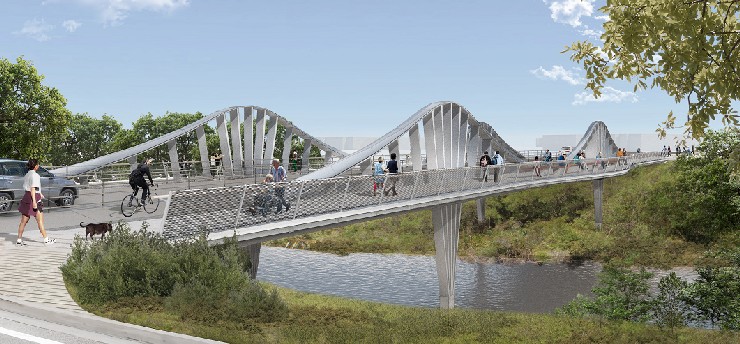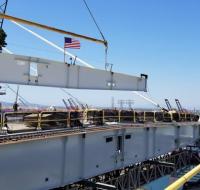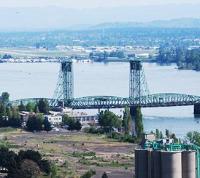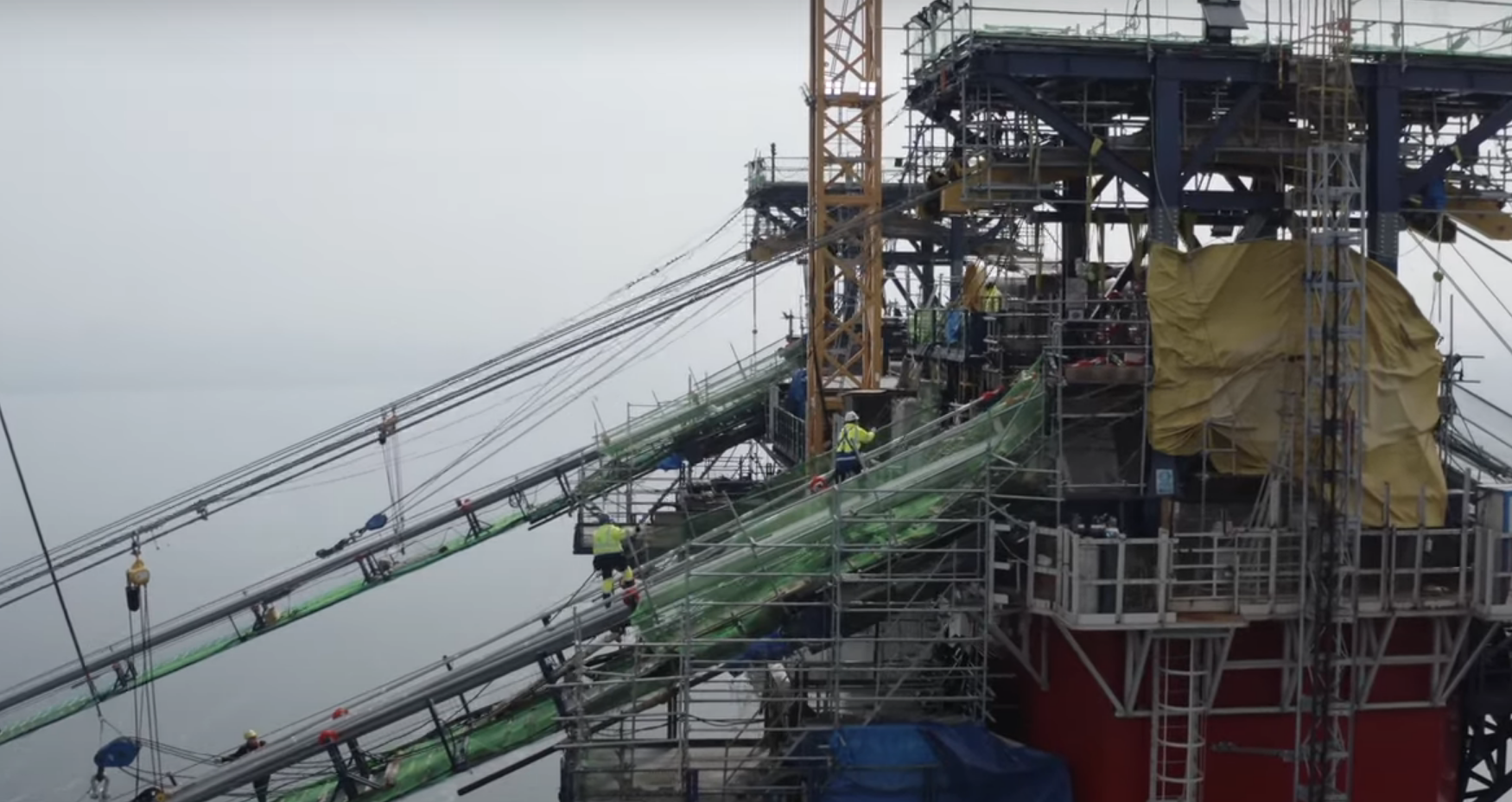The new multimodal bridge will be built in the 16 Tech Innovation District of Indianapolis, USA.
Design of the bridge is by a team led by Schlaich Bergermann Partner (SBP) and Practice for Architecture & Urbanism. The other team members are Moniteurs Communication Design, Martha Schwartz Partners (MSP), Shrewsberry & Associates, CTL Engineering, Circle Design Group and People for Urban Progress (PUP)
The bridge has been designed to prioritise pedestrian and cyclist access while also reinterpreting the principles of a classic suspension bridge to create what is said to be the first of its kind in the United States.

It will span Indianapolis’ Fall Creek at West 10th Street and Riley Hospital Drive to connect the 16 Tech Innovation District to Indianapolis’ research/medical corridor and the downtown community.
Client 16 Tech Community Corporation charged the members of the international multi-disciplinary team with designing a signature work of public infrastructure that will serve as an example of innovation and collaboration for Indianapolis.
“Working alongside my colleague Vishaan Chakrabarti of PAU, we are proud to have led this exceptional team towards a bridge design that combines architectural creativity and structural efficiency in such an innovative way,” said Michael Stein, partner and managing director of SBP’s New York office. “We are convinced that this beautiful and novel structure will become a landmark for the 16 Tech Innovation District and the City of Indianapolis.”
As part of the design process, the team spent six months engaging local residents. The team learned what residents care about through online surveys, virtual meetings, a hotline in English and Spanish, site walks, neighbourhood canvassing and a partnership with a local STEM-based school.
A local advisory committee of diverse Indianapolis residents and civic leaders helped shape the community engagement process, which informed the bridge design. In response to community feedback, the design team created plans that emphasise accessibility and include dedicated space for bikes, pedestrians and respite.
“PAU was thrilled to collaborate with 16 Tech, SBP and our other team members to deliver a bridge design inspired by both the needs of the richly diverse surrounding community and the beauty of our site in the verdant heart of Indianapolis,” said PAU founder and creative director Vishaan Chakrabarti. “By echoing the surrounding trees with the structure of the bridge, and by providing places of pedestrian repose, this bridge will create both destination and connection during a time our society is in need of both.”
The bridge design prioritises pedestrians and cyclists by creating protected pathways separated from vehicular traffic. The team said that the scheme also responds to the site’s natural conditions. One of the most striking features of Fall Creek is the seclusion created by lines of trees on either side. The bridge design borrows inspiration from the setting, creating tree-like vertical supports that mimic the trunk and branches of a tree. The bridge’s defining attribute - its undulating steel ribbon - also mirrors the natural profile of Fall Creek itself, rising with tree canopies on either side of the waterway and lowering towards the centre to create unobstructed views up and down the creek.
In plan, the 104m-long bridge curves gently outwards on its eastern edge, offering a cantilevered gathering space suspended over the water. This area is designed to encourage passers-by to take a moment and linger, enjoy each other’s company and pause to appreciate the view.
The signature wave-like form is the result of the bridge’s reinterpretation of the principles of a classic suspension bridge to create a new form. This is accomplished by replacing the large vertical masts found on a typical suspension bridge with a fan-type arrangement of multiple smaller masts. Flat steel plates replace the traditional suspension cables as the main supports. The bridge’s tension element is allowed to follow the new mast arrangement. The resulting structure acts like a suspension bridge but is a new approach to the genre, said the design team.
“The design team combined engineering, design thinking, and thoughtful community engagement to create a truly iconic and inclusive centrepiece for Indianapolis,” said Emily Krueger, chief operating officer of 16 Tech Community Corporation and the project lead. “The 16 Tech bridge showcases the innovation at the heart of 16 Tech and continues to enhance the connectivity of our city.”
The design team will continue to refine the bridge design in the coming months; the bridge is targeted for completion by the end of 2023 or early 2024.





